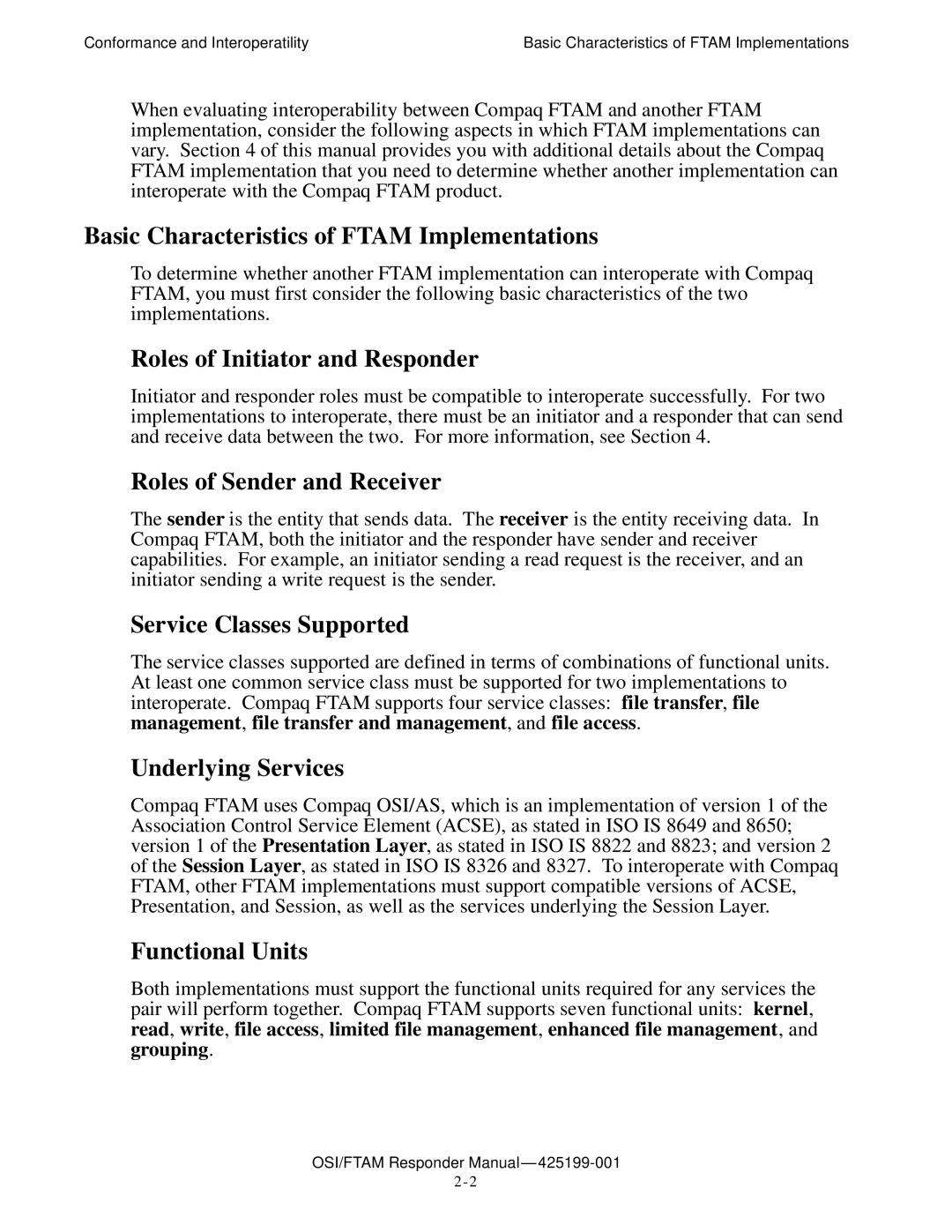Conformance and Interoperatility | Basic Characteristics of FTAM Implementations |
When evaluating interoperability between Compaq FTAM and another FTAM implementation, consider the following aspects in which FTAM implementations can vary. Section 4 of this manual provides you with additional details about the Compaq FTAM implementation that you need to determine whether another implementation can interoperate with the Compaq FTAM product.
Basic Characteristics of FTAM Implementations
To determine whether another FTAM implementation can interoperate with Compaq FTAM, you must first consider the following basic characteristics of the two implementations.
Roles of Initiator and Responder
Initiator and responder roles must be compatible to interoperate successfully. For two implementations to interoperate, there must be an initiator and a responder that can send and receive data between the two. For more information, see Section 4.
Roles of Sender and Receiver
The sender is the entity that sends data. The receiver is the entity receiving data. In Compaq FTAM, both the initiator and the responder have sender and receiver capabilities. For example, an initiator sending a read request is the receiver, and an initiator sending a write request is the sender.
Service Classes Supported
The service classes supported are defined in terms of combinations of functional units. At least one common service class must be supported for two implementations to interoperate. Compaq FTAM supports four service classes: file transfer, file management, file transfer and management, and file access.
Underlying Services
Compaq FTAM uses Compaq OSI/AS, which is an implementation of version 1 of the Association Control Service Element (ACSE), as stated in ISO IS 8649 and 8650; version 1 of the Presentation Layer, as stated in ISO IS 8822 and 8823; and version 2 of the Session Layer, as stated in ISO IS 8326 and 8327. To interoperate with Compaq FTAM, other FTAM implementations must support compatible versions of ACSE, Presentation, and Session, as well as the services underlying the Session Layer.
Functional Units
Both implementations must support the functional units required for any services the pair will perform together. Compaq FTAM supports seven functional units: kernel, read, write, file access, limited file management, enhanced file management, and grouping.
